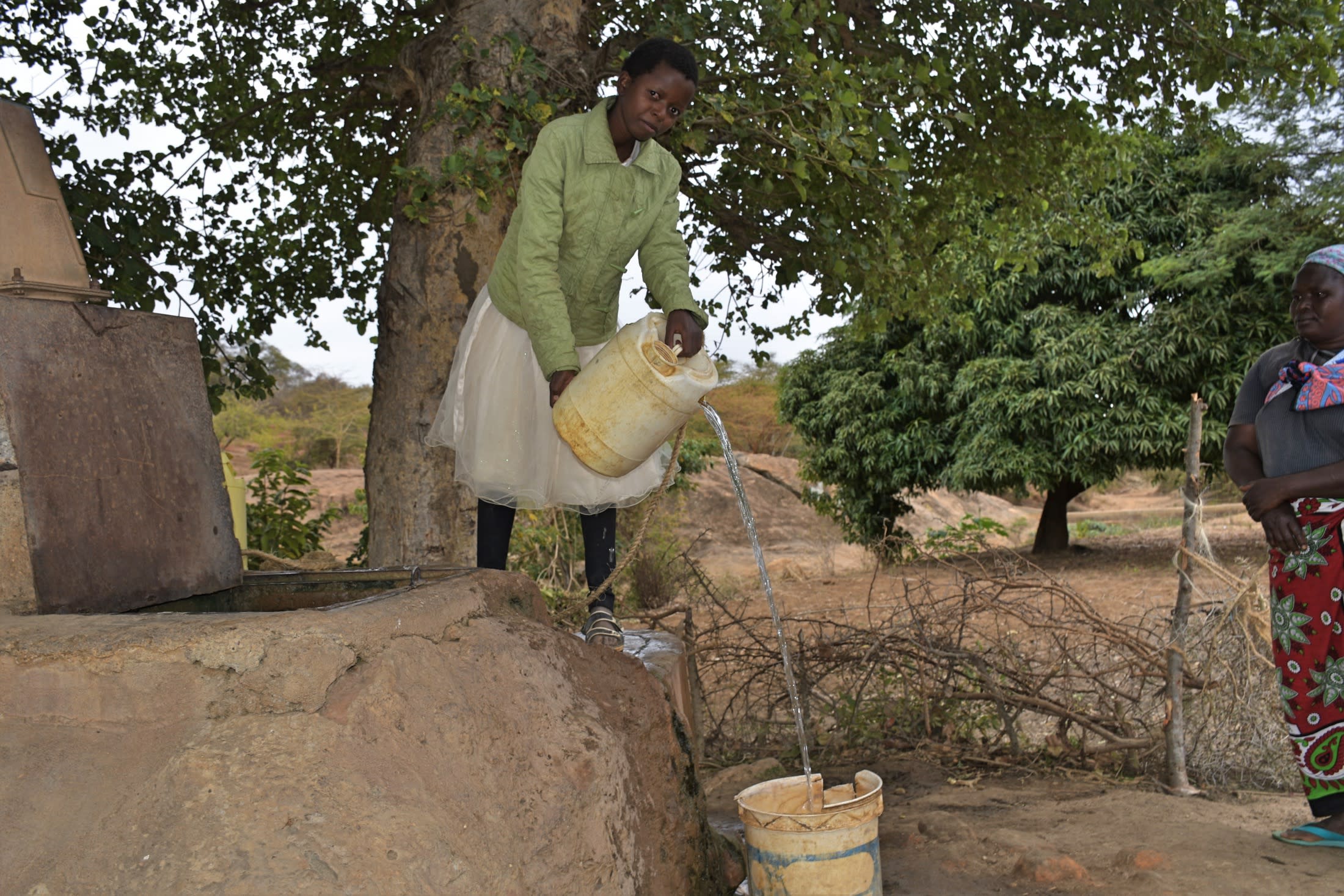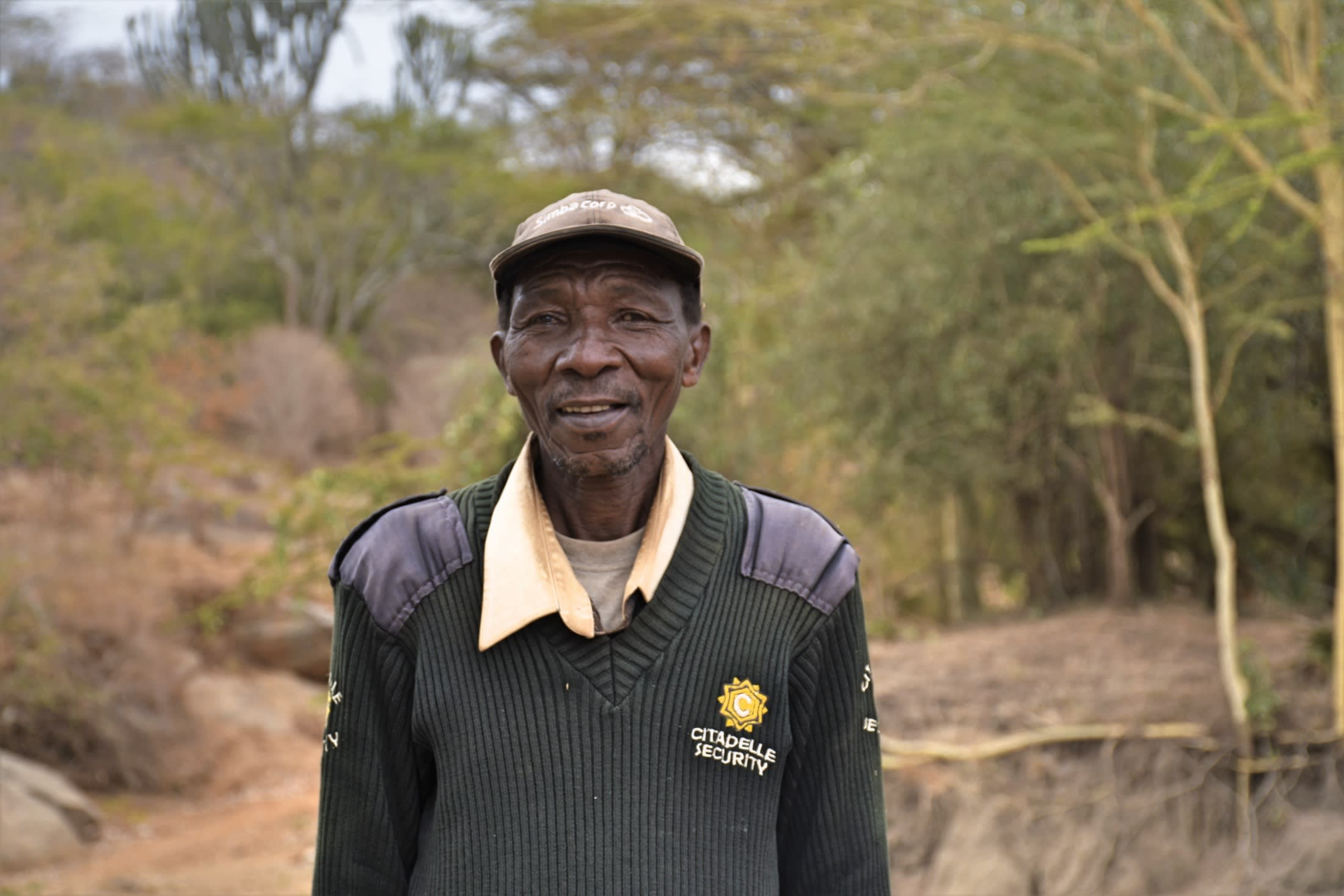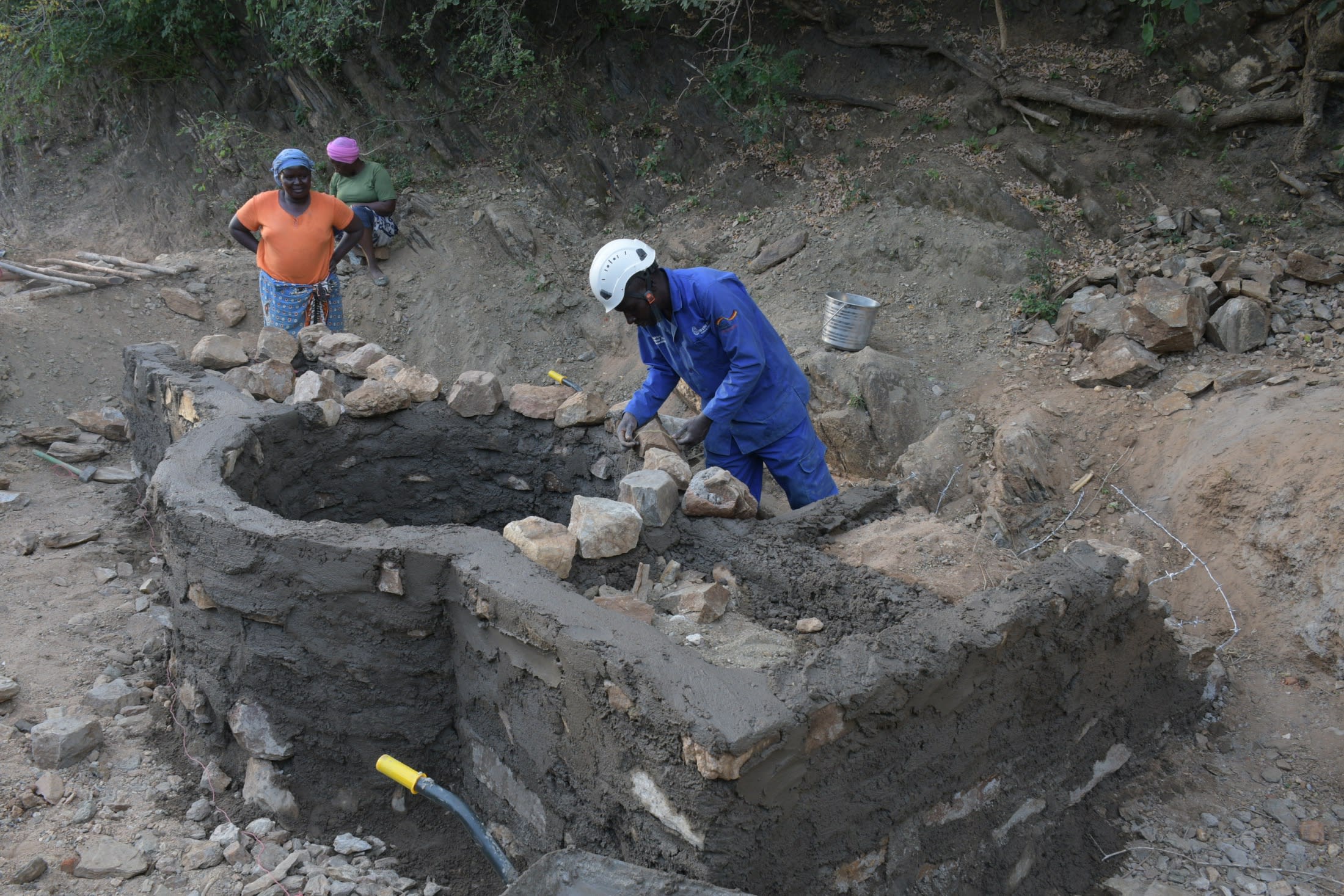The 2,500 people of Ithambangwao walk at least three kilometers (1.86 miles) every day to fetch water that makes them sick.
Our field officer said that some families try to make four trips per day to the unprotected hand-dug well that they use as their only water source. This translates to 12 kilometers (7.45 miles) walked per day, just to ensure a household has enough water for their essential needs.
“Access to drinking water means that the source is less than 1 kilometer away from its place of use and that it is possible to reliably obtain at least 20 liters per member of a household per day.” (The World Health Organization Joint Monitoring Program)

16-year-old Jackline M. (shown above at the well) spends most of her time outside of school getting water for her family. "I...get little time to play with my friends because I have to help in fetching water after classes, or during weekends and holidays."
This demoralizing, repetitive journey reaps no reward except salty, unsafe water.
"The saline water is not appropriate for drinking or irrigating crops," said our field officer, Alex. "The water is also contaminated because the dug well is unprotected. Residents are thus exposed to water-related infections such as stomach upsets, typhoid, amoeba, and dysentery."
"I often get sick after drinking water from the dug well, like last September when I had to seek medical attention," Jackline said.

"Getting money to pay medical bills for my children whenever they contract water-related infections is hard because of the low farm and animal output," said 67-year-old farmer Christopher Muthengi (pictured above). "I want to plant trees during this season but it will not be possible because of the insufficient water and rampant drought. I cannot cultivate any crops because of the drought, which makes providing for my family difficult."
As Christopher said, this area has been ravaged by several years of continuous drought. Drought dries up water sources, makes farming difficult, and prevents people from performing necessary hygiene and sanitation to stave off disease.
Ithambangwao needs a drought-resistant water source of its own.
"The installation of the proposed sand dam and shallow well project will ensure residents have enough clean water nearby," said Alex. "They will...use the extra time and energy on other activities like tree planting, crop cultivation, rearing cattle, or conducting hygiene and sanitation. The community will be able to change the climate of the region in the long run through tree-planting, thanks to water from the sand dam project. The availability of water will ensure the community reaps better animal produce and farm yields, thus acquiring a source of income and ensuring food security. They will use the income to care for their families through better education and ultimately securing better job opportunities."
Note: Our proposed water point can only serve 300 people per day. We are working with the community to identify other water solutions that will ensure all 2,500 people in the community have access to safe and reliable drinking water.
What We Can Do:
Our main entry point into this community has been the Self-Help Group, which comprises households working together to address water and food scarcity in their region. These members will be our hands and feet in constructing water projects and spreading the message of good hygiene and sanitation to everyone.
Hand-Dug Well
This particular hand-dug well will be built adjacent to a sand dam project, which will supply clean drinking water once it rains. We have provided the group with the tools needed for excavation. With the guidance of our artisans and mechanics, the excavated well will be cased, sealed with a well pad, and then finished with a new AfriDev pump.
Excavation takes a month or more on average, depending on the nature of the rock beneath. Construction of the well lining and installation of the pump takes 12 days maximum. The well will be lined with a concrete wall including perforations so that once it rains, water will filter in from the sand dam.
This well will bring clean water closer to families.
New Knowledge
These community members currently do their best to practice good hygiene and sanitation, but their severe lack of water has significantly hindered reaching their fullest potential.
We will hold hygiene and sanitation training sessions with the Self-Help Group and other community members to teach essential hygiene practices and daily habits to establish at the personal, household, and community levels. This training will help to ensure that participants have the knowledge they need to make the most out of their new water point as soon as the water is flowing.
One of the most important topics we plan to cover is handling, storage, and water treatment. Having a clean water source will be extremely helpful, but it is useless if water gets contaminated when it is consumed. We will also emphasize the importance of handwashing.
The community and we firmly believe that all of these components will work together to improve living standards here, which will help to unlock the potential for these community members to live better, healthier lives.
We typically work with self-help groups for 3 to 5 years on multiple water projects. We will conduct follow-up visits and refresher training during this period and remain in contact with the group after all of the projects are completed to support their efforts to improve sanitation and hygiene.




 Protected Dug Well
Protected Dug Well
 Rehabilitation Project
Rehabilitation Project


























